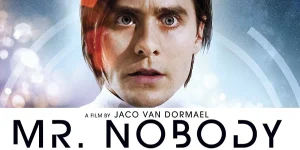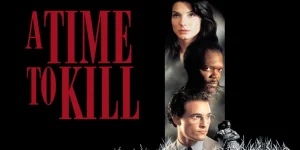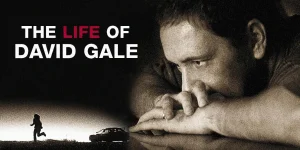Dallas Buyers Club (2013), directed by Jean-Marc Vallée, is a powerful biographical drama about one man’s fight against both a deadly disease and a broken medical system. It’s raw, emotional, and anchored by transformative performances from Matthew McConaughey and Jared Leto.
Table of Contents
ToggleDetailed Summary
The Diagnosis
The story begins in Dallas, Texas, 1985. Ron Woodroof (Matthew McConaughey), a hard-living electrician and rodeo enthusiast, discovers he is HIV-positive and given 30 days to live. At first, Ron, who holds deeply prejudiced views, rejects the diagnosis and believes it’s impossible. Soon, his health deteriorates, forcing him to confront the truth.
The Search for Treatment
AZT is the only FDA-approved drug available at the time, but it is both toxic and inaccessible. Ron seeks alternative treatments abroad and discovers that effective medicines are available outside the U.S., though not legally approved. With his entrepreneurial instincts kicking in, he begins smuggling these drugs back into Texas.
Formation of the Dallas Buyers Club
To skirt U.S. regulations, Ron establishes the “Dallas Buyers Club,” where members pay for a subscription but receive treatments “for free.” This loophole allows him to distribute otherwise-illegal medicine. He partners with Rayon (Jared Leto), a transgender woman living with HIV, and despite Ron’s initial homophobia, the two form a deep and unlikely bond.
Conflict with Authorities
The FDA and DEA begin cracking down on Ron’s operation. Pharmaceutical companies see him as a threat to their profits, while the government views him as a criminal. Despite legal battles, harassment, and raids, Ron refuses to stop, driven both by his own survival and a sense of justice for others.
The Human Side
The film also explores Ron’s evolving humanity. His partnership with Rayon softens his prejudices. While he begins the story as selfish and abrasive, by the middle of the film he shows empathy, fighting for the dignity and health of others. Rayon’s declining health becomes a heartbreaking emotional anchor, especially as Ron tries to protect her from discrimination.
Movie Ending
The final act focuses on Ron’s deteriorating health and his legal battles. Rayon tragically dies, intensifying Ron’s drive to keep fighting. In the courtroom, he sues for the right to obtain unapproved drugs. Although the court rules against him, the judge acknowledges that Ron has raised an important moral issue, subtly criticizing the FDA.
The film closes with Ron’s resilience. Despite living far beyond his initial 30-day prognosis (seven years after diagnosis), his body is frail but his spirit unbroken. The last scenes show him continuing to fight for access to treatments, transforming from a self-serving man into an advocate for others. The ending emphasizes bittersweet victory: he may not have beaten the system, but he carved out dignity, hope, and time — both for himself and for many others.
Are There Post-Credits Scenes?
No, Dallas Buyers Club does not have any post-credits scenes. The story ends with the final emotional sequence, followed by text cards explaining Ron’s life and the eventual changes in the fight against AIDS.
Type of Movie
The film is a biographical drama with heavy emphasis on medical, legal, and social themes, tackling real-world history through a character-driven narrative.
Cast
- Matthew McConaughey as Ron Woodroof
- Jared Leto as Rayon
- Jennifer Garner as Dr. Eve Saks
- Steve Zahn as Tucker
- Denis O’Hare as Dr. Sevard
Film Music and Composer
The score was composed by Colin Stetson and Shane Carruth, delivering a haunting and minimalist soundtrack that underscores Ron’s struggle. The soundtrack also includes popular tracks of the era, grounding the story in the mid-1980s.
Filming Locations
The film was shot primarily in New Orleans, Louisiana, though it is set in Dallas, Texas. Louisiana was chosen for budgetary reasons and tax incentives. The gritty authenticity of the sets and locations successfully mimicked 1980s Texas, enhancing the film’s realism.
Awards and Nominations
- Academy Awards (2014):
- Won: Best Actor (Matthew McConaughey)
- Won: Best Supporting Actor (Jared Leto)
- Won: Best Makeup and Hairstyling
- Nominated: Best Picture
- Nominated: Best Original Screenplay
- Nominated: Best Film Editing
The film swept through award season, with McConaughey and Leto universally praised.
Behind the Scenes Insights
- Matthew McConaughey lost nearly 50 pounds to portray Ron authentically.
- Jared Leto stayed in character as Rayon throughout filming, even off-camera.
- The movie was shot in 25 days with a small budget, forcing fast, guerrilla-style filmmaking.
- Jean-Marc Vallée chose to film using mostly natural light to add realism.
Inspirations and References
The film is based on the true story of Ron Woodroof, though creative liberties were taken. Some characters, like Dr. Eve Saks and Rayon, are composites or fictional, created to represent broader experiences within the AIDS crisis.
Alternate Endings and Deleted Scenes
While no alternate ending exists, some scenes were trimmed to reduce runtime. For example, extended moments of Ron’s decline and additional club interactions were reportedly cut for pacing.
Book Adaptations and Differences
The movie isn’t directly adapted from a book but is based on real reporting and interviews about Ron Woodroof. Screenwriters Craig Borten and Melisa Wallack dramatized events, combining fact with fiction to streamline the story.
Memorable Scenes and Quotes
Key Scenes
- Ron receiving his diagnosis and angrily rejecting it.
- The first time Ron and Rayon team up, a tense but humorous negotiation.
- Rayon’s emotional bank scene where she asks for money, facing discrimination.
- The courtroom sequence, with Ron standing against the FDA.
Iconic Quotes
- Ron Woodroof: “Sometimes I feel like I’m fighting for a life I ain’t got time to live.”
- Rayon: “I want to be treated with dignity.”
- Ron Woodroof: “I’m the boss of my own body.”
Easter Eggs and Hidden Details
- Rayon’s costumes reflect her emotional state, shifting from bold and colorful to subdued as her health declines.
- The “30 days to live” calendar motif is subtly mirrored in Ron’s obsessive drive to beat the odds.
- The choice of 1980s country and rock tracks emphasizes Ron’s Texas roots while contrasting with the growing urban AIDS crisis.
Trivia
- The film was rejected by multiple studios before finally being made.
- Jared Leto refused to watch himself on screen, wanting to stay immersed in Rayon’s experience.
- The real Ron Woodroof was not as overtly homophobic as the film initially portrays him; this was exaggerated for dramatic effect.
Why Watch?
If you want a movie that combines emotional storytelling, powerhouse acting, and real-world significance, Dallas Buyers Club is essential viewing. It’s not just about one man’s fight against HIV, but a story of resilience, transformation, and resistance against systemic injustice.
Director’s Other Movies (Jean-Marc Vallée)
- C.R.A.Z.Y. (2005)
- The Young Victoria (2009)
- Wild (2014)
- Demolition (2015)
Recommended Films for Fans
- Philadelphia (1993)
- Milk (2008)
- The Normal Heart (2014)
- Bohemian Rhapsody (2018)
- The People vs. Larry Flynt (1996)













